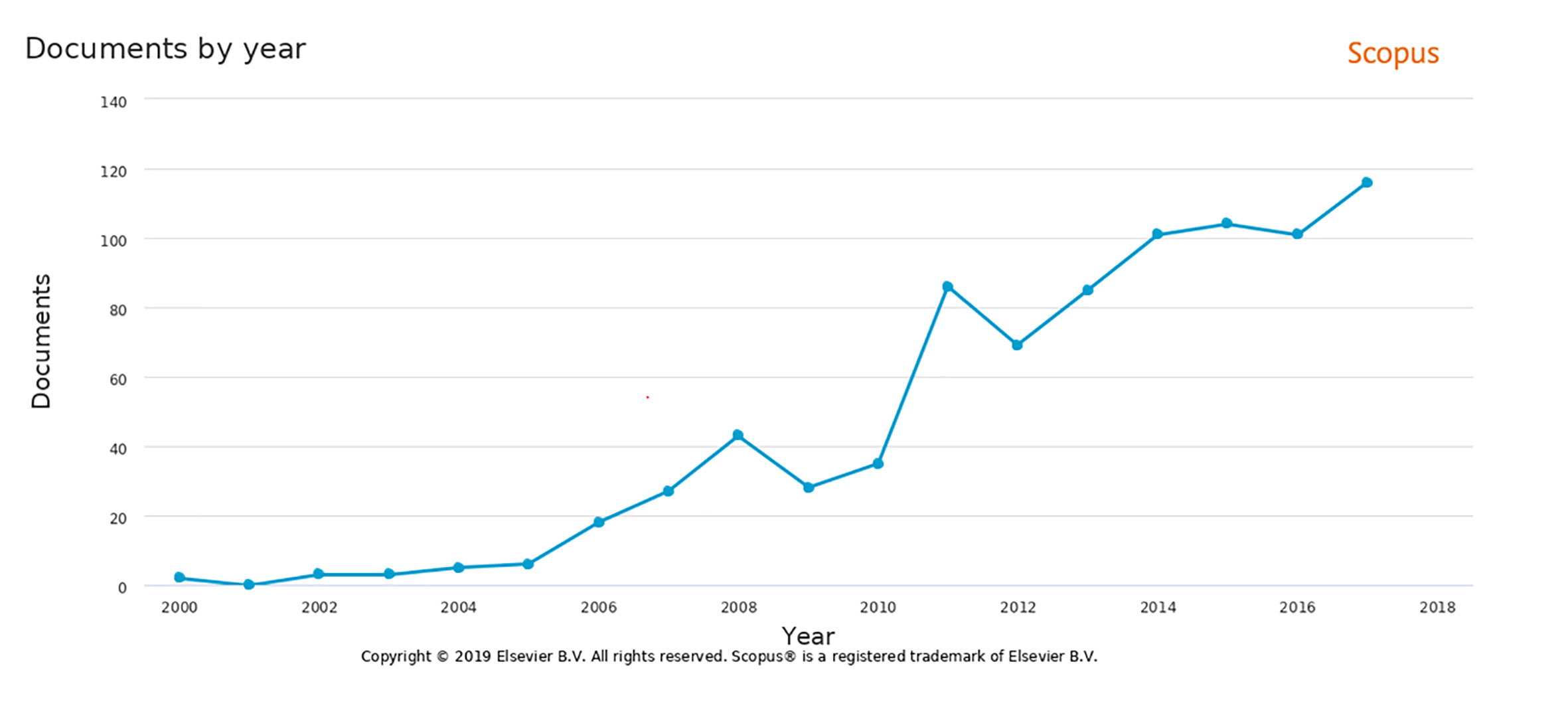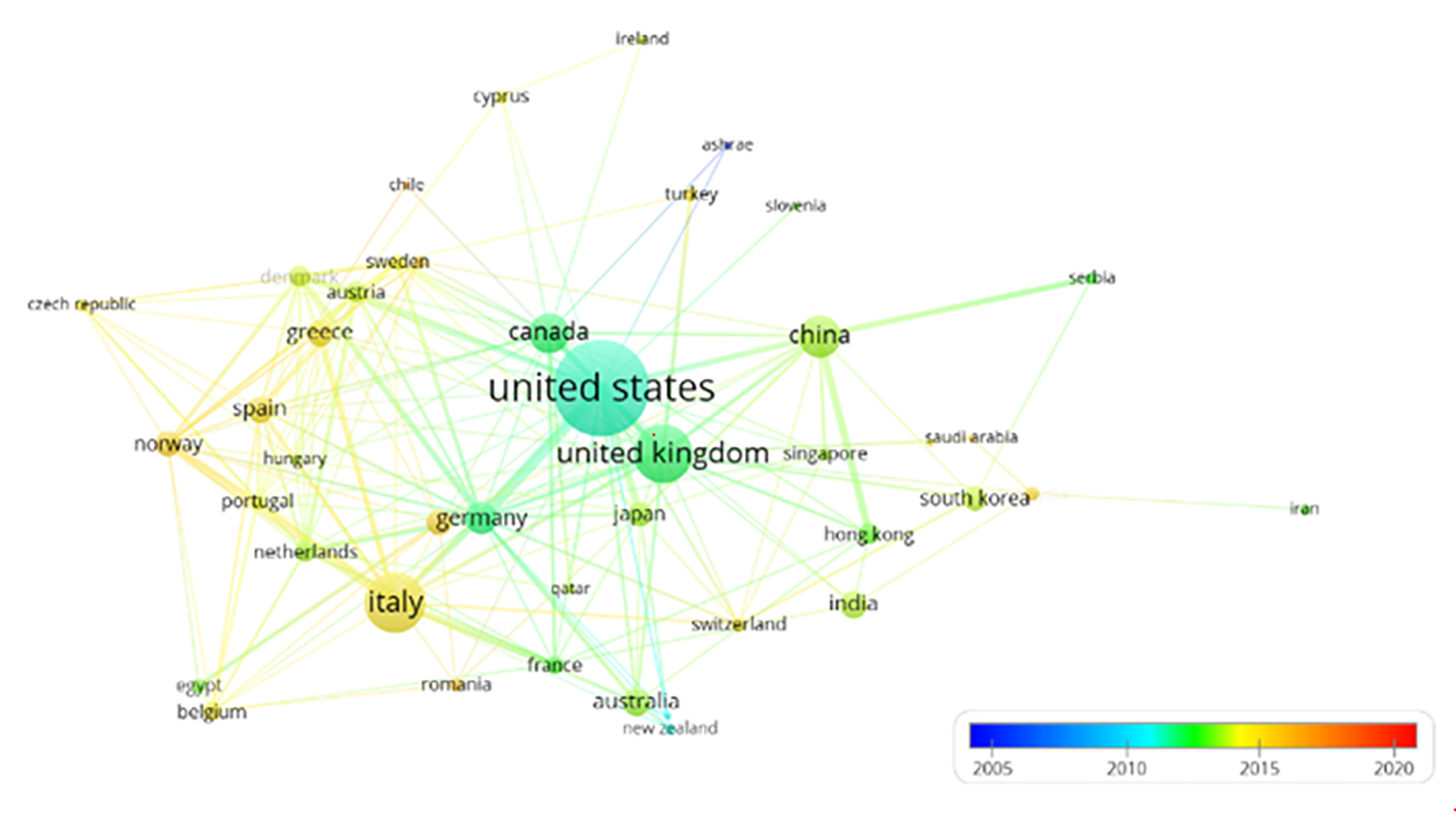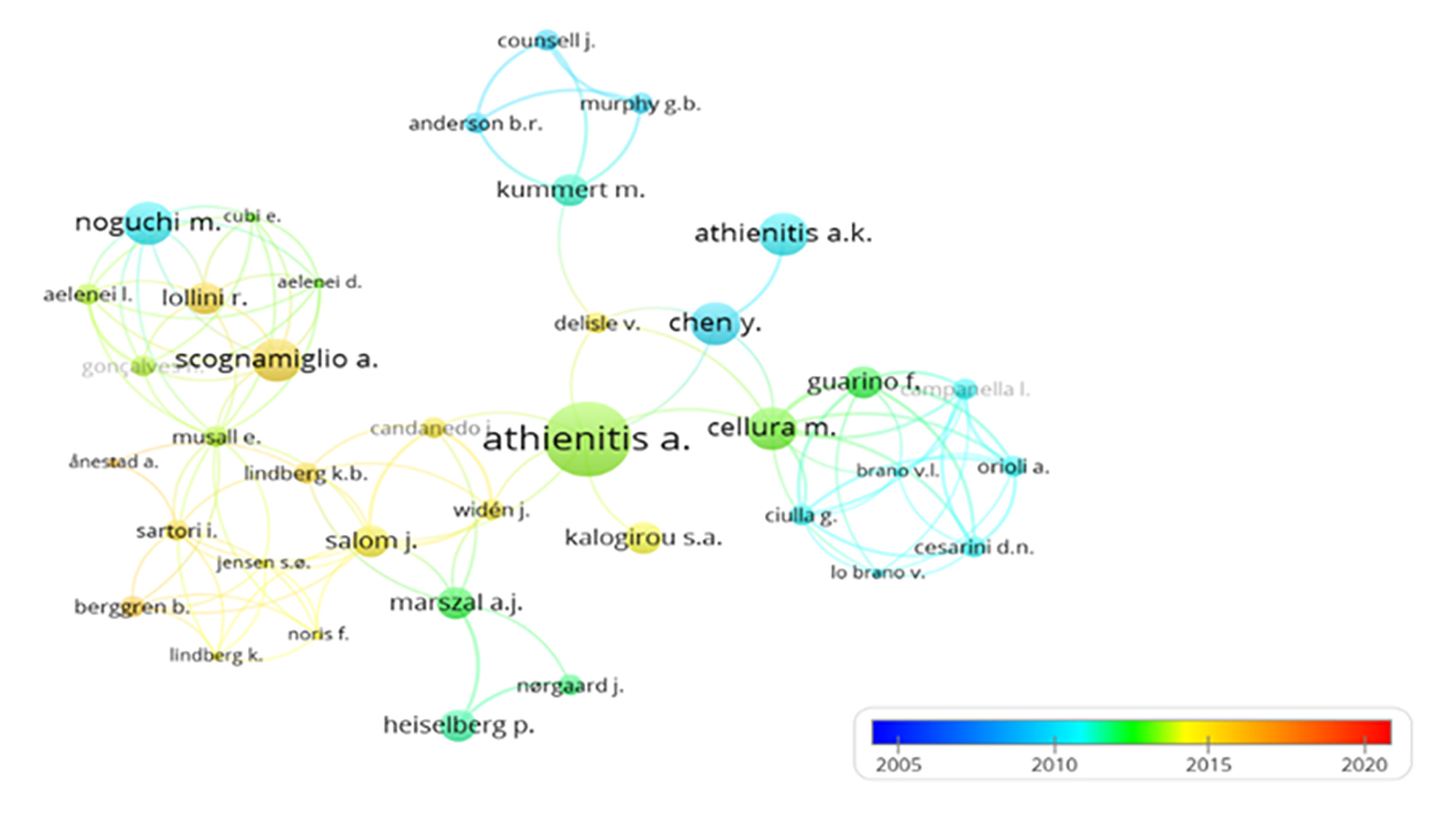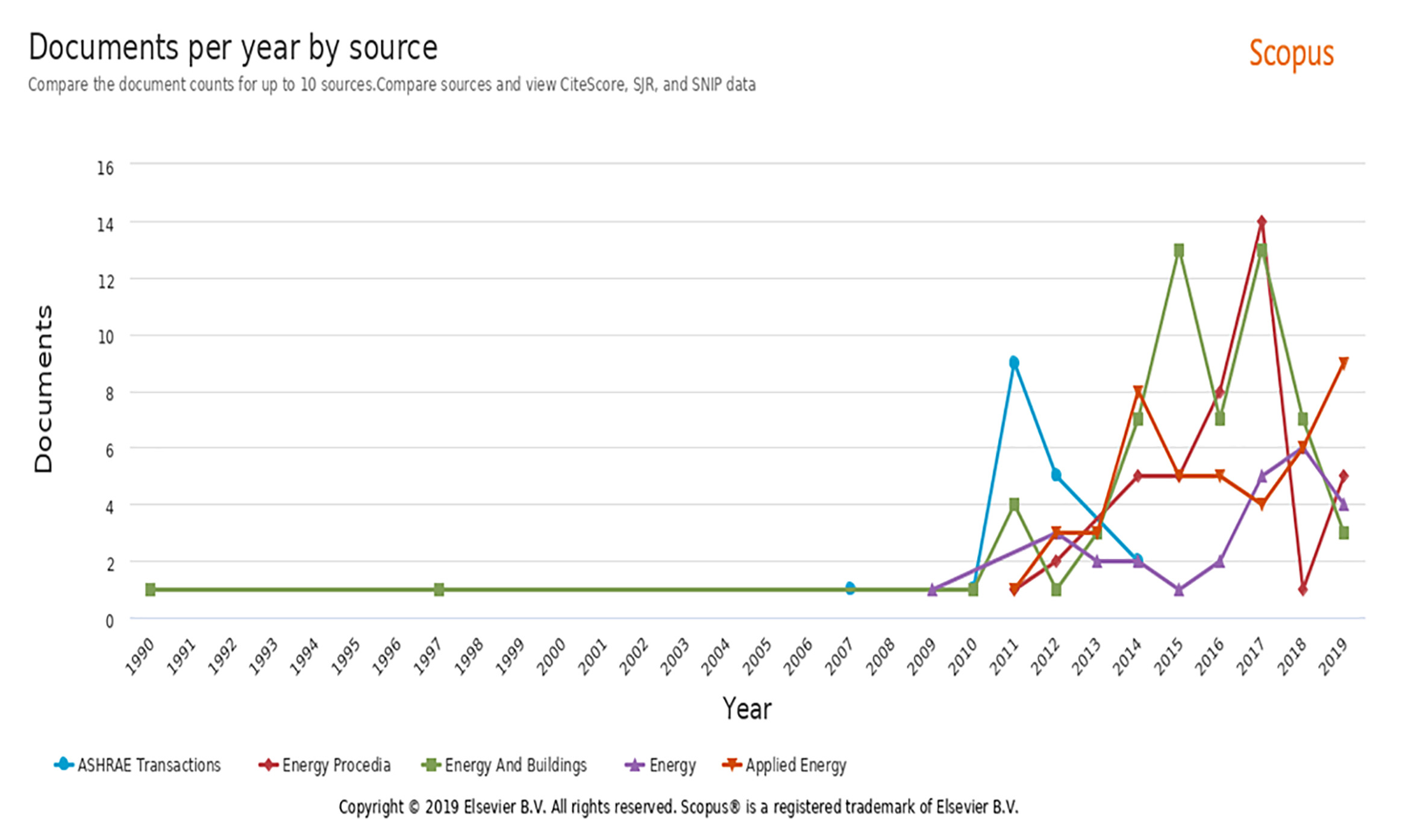1. Introduction
The production of energy from the burning of fossil fuels such as coal, oil and natural gas accounted for 45% of the global Ecological Footprint. The substantial reduction in the burning of fossil fuels and associated emissions of carbon dioxide is vital to avoid dangerous climate change 1,2. In China, from 1978 to 2010, total primary energy consumption increased significantly from 0.57 to 3.25 trillion tons of oil equivalent (an average annual increase of 5.6%.) In 2009, China exceeded to the United States to become the largest consumer of energy 3,4. Although carbon emissions per capita in China are low, its total carbon emissions related to energy reached 6.1 Giga Tons (Gt), surpassing to the United States (5.7Gt) in 2007 and it is estimated that they will reach more than 10Gt in 2050 5,6.When considering the energy consumption and the footprint of emissions in the life cycle, the buildings represent a significant proportion of energy-related emissions. In addition to the energy used for the operation, the buildings incorporate the energy used in the extraction, processing, manufacture and transport of building materials. Energy consumed in the construction and demolition or destruction of buildings. This embodied energy, together with the energy used during the lifetime of a building, constitutes the energy of the life cycle and the footprint of the emissions. It is estimated that buildings around the world account for about one third of global greenhouse gas emissions 6,8. When raising the importance of sustainability in climate change and energy policy, the works 8,9 suggest that the greatest margin for the reduction of demand was in the improvement of buildings.
In recent years there has been a growing interest in zero-net energy buildings. Since the 1970s, the concept of net energy has been applied in many different fields, from fossil fuels 10,11 and nuclear energy to renewable energies 12. In buildings, net energy often refers to a balance between the energy consumption in a building and the energy produced by its renewable or alternative energy sources. The terms zero energy buildings (ZEB) and Zero Net Energy Buildings (ZNEB) have been adopted by different researchers. Definitions and detailed descriptions can be found in the works of Paiho S, et all and Muresan AA, et all 13,14. In the EENC, there is a balance between the energy taken and supplied to the energy grid (usually electricity) over a period of time, nominally one year. ZEB is more general and may include autonomous buildings. Several countries have adopted or consider the possibility of establishing ZEB as their future energy targets for construction, such as the Construction Technology Program of the US Department of Energy and the EU Directive on Energy Efficiency of Buildings 14,15. There has also been a series of case studies around the world that demonstrate the potential of ZEB to help alleviate the depletion of energy resources and the deterioration of our environment 15,16. In general, CSEs involve two design strategies. First, minimize the need to use energy in buildings (especially for heating and cooling) through more efficient measures from the energy point of view; and second, adopting renewable sources of energy and other technologies to meet minimum energy needs 17,19. This article presents a review of the works related to ZEB and discusses the implications for the sustainable development of these facilities. To give a more complete vision and a better understanding of the underlying issues, we will also consider studies that are not specific to the ZEB, but are directly related to the design strategies and lead to the development of ZEB. Show the investigative propensities in technologies of ZEB, avoiding the technicalities of the practical technology and its interiorities.
2. Materials and Methods
For the elaboration of this work, the scienjpgic research catalog Scopus was used, as well as the scientometric analysis tools that it provides to its subscribers 1. Under the search criteria "zero energy buildings technology" in the title of the articles, the summary and the words caves of these; and considering from the first record in 1956 to February 2018. 823 scienjpgic contributions and 3561 patents related to these were detected in said catalog.
All this information was extracted from this academic research catalog in CSV format; and it was processed in the VOSviewer bibliometric analysis software. This is a computer program to create, visualize and explore bibliometric scienjpgic productivity maps in various fields.
The information of the detected contributions contained:
VOSviewer was used in text mining and to analyze data from bibliometric networks, collaborative relationships between nations and authors. In addition, it was used to obtain the relation of coincidence between scienjpgic terms under the search criteria previously exposed. The use of this software is jusjpgied by its potential in the process of visualization of productivity and orientation of scienjpgic activity.
3. Results
The study of the detected information allowed to obtain Figure 1. This figure illustrates a clear tendency to growth in terms of research related to ZEB technologies in recent years. This is due to the marked interest by architects and engineers in obtaining buildings that allow mellifluous relations with the environment, as well as the reduction of the economic and energetic amount of these facilities in the stages of construction, exploitation and demolition (1-3. In the aforementioned graphs it can be perceived that from the year 2005 there is an increase in this type of research.
The map of terms shown (Figure 2) is the result of the text mining analysis performed with the VOSviewer software on the information extracted from the Scopus catalog, under the criteria previously explained. It can be observed that the term "disign" is the term of greatest intensity of occurrence, given that this is a criterion for idenjpgying this type of buildings. The following terms with the highest incidence are "model" and "consuption" respectively. Considering the incidence of these terms (diameter of the circumference), as well as the colors that idenjpgy the displacement of these in time; I could affirm that the consumption of energy and resources of these buildings from the design stage, has become the most studied research topic as of 2015. Both this graphic and those discussed below begin their analysis from the years 2005, because as shown in Figure 1, as of this year there is evidence of an increase in the number of contributions in this field.
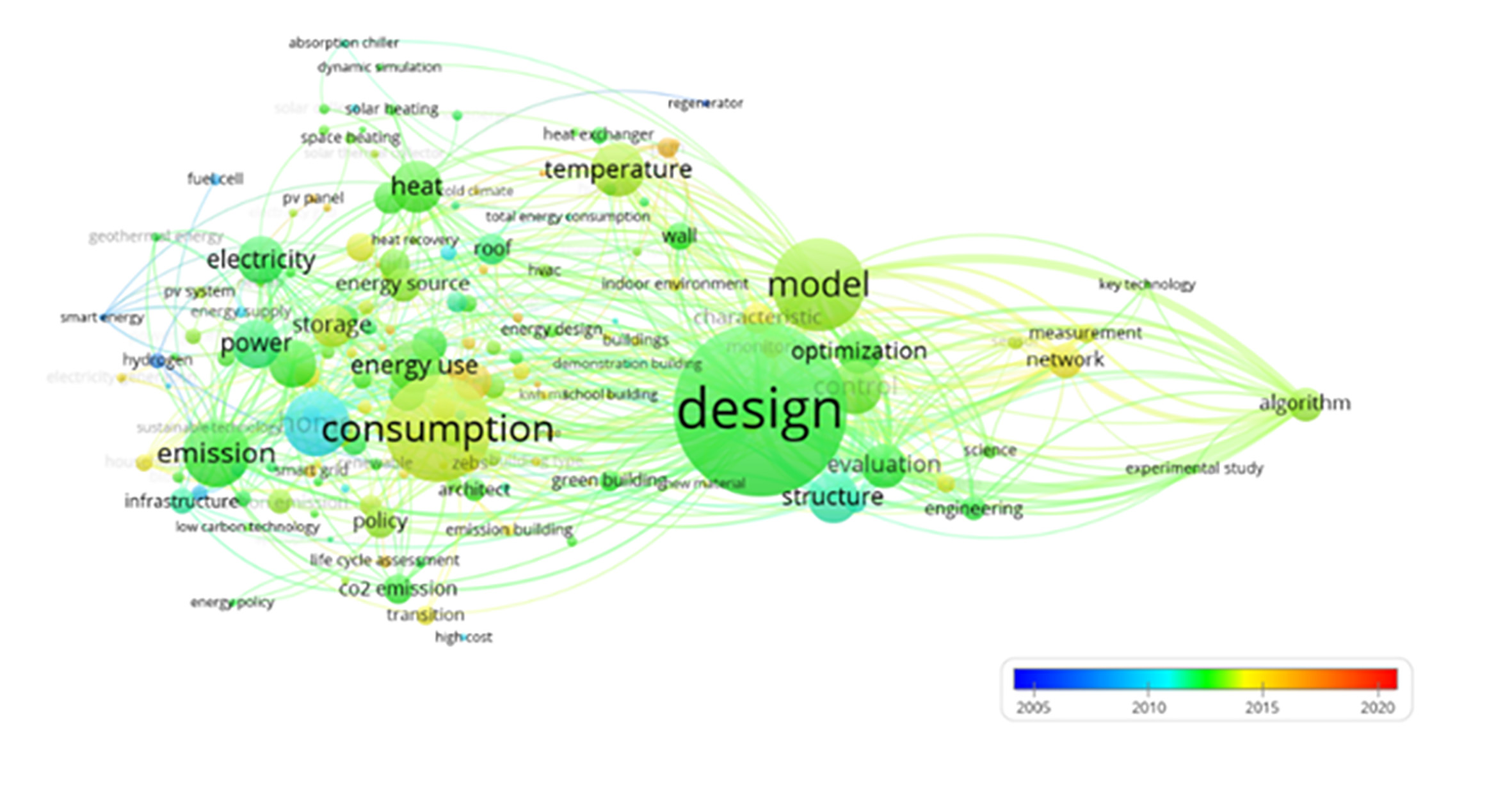
Figure 2 Map of research terms in zero energy building technologies, and the relationship between them.
The United States is the nation at the forefront in this type of research and practice. Figure 3 shows that the countries that today represent the engine of the world economy see in building technology zero energy, a livable alternative to the global energy, environmental and economic crisis. The network of collaboration between researchers from different nations has greater density as of 2016 among European nations.
The network of authors that represent this topic within the Scopus academic directory between 2005 and 2010 takes into account its most clustered nodes, while from 2016 onward the laos of this network become deconcentrated. This shows a greater projection of this topic within the international scienjpgic community (Figure 4).
The most exposed researcher on this subject so far is Andreas K. Athienitis, Concordia University Montreal (Montréal, Canada). This researcher has 11 published works within the mentioned academic directory and an H index of 27. Table 1 shows the most cited contributions in the Scopus catalog. This table reviews and analyzes publications dealing with zero-energy building technologies. The mentioned table highlights the title of the contribution and the objective of this.
Table 1 Summary of the contributions analyzed most cited so far.
| Title | Objective |
|---|---|
| Life cycle cost analysis of a multi-storey residential Net Zero Energy Building in Denmark (20). | How far should we go with energy efficiency measures and when should we start to apply renewable energy technologies in zero energy buildings? The answer to this question is the objective of this contribution. |
| A nZEB housing structure derived from end of life containers: Energy, lighting and life cycle assessment (21). | To tackle a lighting project of an old town in Italy. Its originality lies in the holistic approach. |
| Energy sector vulnerability to climate change: A review (22). | Energy systems can be vulnerable to climate change. This article summarizes the contribution of its authors to a few strategic studies, research workshops, development forum and international conferences related to Climate and Energy. |
| The challenge of climate change and policy response in Pakistan (23). | The paper examines the current and potential impact of climate change in Pakistan and reviews national policies and plans to examine the extent to which climate-related issues have been integrated into them. The document also analyzes adaptation and mitigation measures and idenjpgies key elements that should be included in the Pakistan Climate Change Action Plan and emphasizes their incorporation into national development plans and policies. |
| Thermal energy storage in building integrated thermal systems: A review. Part 1. Active Storage systems (24). | The objective of this work is to review and idenjpgy the integrated thermal storage systems and classify them according to the location of the thermal storage system. |
| Green occupants for green buildings: the missing link? (25). | This document follows the results of the recent post-occupation evaluation surveys within two academic office buildings located in Sydney, Australia. Complemented with a questionnaire of environmental attitudes, based on the New Ecological Paradigm. |
| A review of research and developments of building-integrated photovoltaic/thermal (BIPV/T) systems (26). | This article presents an exhaustive review of the BIPV / T technology, including the main developments of several BIPV / T systems, experimental and numerical studies, and the impact of the BIPV / T system on the performance of the building. The BIPV / T systems reviewed here are: air-based systems, water-based systems, concentration systems and systems that involve a phase change work environment such as BIPV / T with heat pipe or heat pump evaporator. This work provides a general description of the research, development, application and status of BIPV / T systems and modules. Finally, research needs and opportunities are idenjpgied. |
Of the works reviewed, it is reasonable to indicate that the design techniques and technologies associated with the Zero Energy Buildings are well established and will play an important role in future scenarios, in terms of sustainable development. However, research niches were detected in three areas:
3.1. The Cost of Life Cycle and Environmental Impacts
The concept of ZEB raises the question of "in what scale and depth should be taken energy efficient measures before considering renewable energy technologies to meet the needs energy” 1. One approach is to carry out an energy analysis of the life cycle of the ZEB. Several studies have been carried out using the life cycle energy accounting technique to assess energy efficiency and the implications of building emissions 2,3 or technologies in specific renewable energy sources 4,5. A study on a residential building in Denmark has indicated that, from a cost-effectiveness perspective, energy demand should be minimized through energy-efficient building designs, leaving only a very small amount of action of alternative energy supply 1,6. A new term (life cycle of zero energy buildings) has also been suggested to emphasize the importance of examining the entire CEE on a life cycle basis taking into account both the energy incorporated in the construction and in the exploitation and demolition 6,7. The term (life cycle of zero energy buildings) establishes that the total energy consumed in the construction process as well as in the operation and destruction process, does not exceed the energy produced by its renewable energy sources during the life of the building.
There are still great challenges to overcome in the analysis of the life cycle of these facilities. For example, while geothermal air conditioning has proven useful in reducing CO2 emissions compared to electric or natural gas heating systems, it has been argued that the reduction is very poor when other environmental impacts are considered in the cycle analysis of life 8,10. On the other hand, the modifications that take place in the electric power generation facility that supply these buildings must be considered. Many of these changes revolve around the reduction of greenhouse gases 11,12. All these are areas in which one can work in order to achieve positive incidences of these technologies by reducing the ecological footprint of buildings.
3.2. Climate Change
Much evidence points to the fact that the climate is changing under the influence of the behavior of contemporary society. The reviews of the impact of climate change in the energy sector in general 1,3 and the use of energy in the built environment in particular 4 has highlighted the vulnerability of the controlled environments of buildings and their energy performance. Specifically in the CEE, it has been found that, although the annual variations in the total use of construction energy are relatively small, the impact of energy consumption in relation to the ZEB objective is significant. Multiannual simulation should be used, taking into account climate change for the design and analysis of ZEB sensitive to the already evident climate change 5. This is in contrast to the representative meteorological year (eg, (typical meteorological year) and (typical principal component year)) generally adopted for the simulation analysis of building energy flow per hour 6,8. This leads to the question of the selection of the climate model. For example, 9 compared the performance of five models of general circulation in terms of (dry bulb temperature), (wet bulb temperature) and (global solar radiation) in different climatic zones.
This research showed that the performance of the five models can vary greatly in different climatic zones and for different meteorological variables. Therefore, more research is required on the selection of appropriate climate models for the construction of energy simulation studies in buildings. In addition, in recent years there have been many studies on the heating of buildings, but very little on the cooling or air conditioning of these. Global warming will lead to less heating requirements especially in colder climates and vice versa in warmer climates for cooling requirements. Therefore, efforts should be directed to a better understanding of thermal efficiency, costs and environmental impact of space cooling; particularly in the context of urban planning. In addition, the cooling provided by solar energy, although it has not yet been widely adopted, presents a good energy saving and a mitigation potential of environmental and economic impact, especially in hot climates, since the maximum cooling load of the building and the Maximum solar intensity tend to occur at the same time 10,12.
3.3. Aspects of Social Policies
Energy is a key component of any sustainable development strategy and it is important to control the effects of energy policy on the social, economic and environmental dimensions. The key indicators of energy management developed in most studies on energy use and emission prediction are socio-economic parameters 13,15. It has been argued that it is necessary to encourage and maintain a positive attitude towards energy management and sustainability in society. An economic and environmental vision must be accompanied by a strong social component 16,18. For example, a case study on an SPV Photovoltaic Panel System connected to the grid in Hong Kong has shown that, based solely on the economic sphere, SPVs are not viable due to the long recovery period of the investment which is around 70 years. However, if the source characteristics of the incorporated energy are taken into account, the recovery period is considerably reduced to less than 10 years 4,19,27. A positive social attitude towards the environment and sustainable development could influence the decision in favor of greater use of renewable energy sources. In addition, it has also been shown that people with pro-environmental attitudes tend to be more consistent in accepting the interior environment in ecological buildings 28. This could have far-reaching implications for energy saving and sustainable development, since the adaptive thermal comfort approach discussed in the article 29 could be more widely welcomed. In transition towards a sustainable society, a profound respect for the world around us is necessary and indispensable. These criteria leave a clear opportunity for research in areas such as socioeconomic and environmental in terms of ZEB technologies.
4. Discussion
The map of research terms in zero energy building technologies, shown in Figure 2 illustrates the interest of the scienjpgic community in the design of this type of buildings. The design of zero energy buildings is developed considering the energy criteria and the means by which said energy is supplied. The energy demanded is generated mainly by renewable energy sources, but when these sources do not compensate the load, conventional energy sources are used. The sources of energy can be in the building, in its place or at a distance. For these reasons in the modeling and designs of a ZEB, several parameters must be considered, such as:
4.1. The dimension and the elements of construction. Two buildings that are composed of different elements and with different dimensions, do not behave energetically in the same way, even being in the same climatic region.
4.2. The purpose of the building. The facilities that are used for different purposes have different energy criteria. The energy conditions of a hospital differ greatly, with respect to those of a shopping center or an educational institution.
4.3. The location of the building. The constructions in different latitudes and longitudes have dissimilar energy requirements, in addition the quantity and type of the renewable energy source that can be used varies.
4.4. Parameters not foreseen. These are of two types. First, the human dimension; the users of the building and its activities can not always be predicted, the reason is the subjective factor. And second, renewable energy sources are often subject to weather conditions and there is always a degree of uncertainty about predictions.
The process of modeling a building contemplates all these parameters, so it is a complex process with many details, which must be done with precision and care. It is the job of engineers, architects, researchers and building managers to collaborate with the most precise criteria and observations in the modeling and design of buildings.
Figure 5 shows the journals that offer more visibility to research in modeling and design of zero energy buildings. It is evident in this graph that as of 2010 the publications in this research line increase, this aspect coincides with the interpretation of the matte of terms of the previously mentioned Figure 2.
5. Conclusions
The revision and discussion of the referred works allows to establish the following final considerations:
5.1. There is a growing interest in the potential of the CEE to mitigate the problems related to the depletion of resources and energy. In general terms, CSEs involve two strategies: they minimize the need to use energy in buildings through energy efficiency measures and the adoption of renewable energy sources and other technologies to meet the remaining energy needs.
5.2. Trends in research in this field focus on the consumption of energy and resources of buildings, from the design stage; from the year 2015.
5.3. The research detects research niches in three areas: life cycle cost analysis, environmental impact, and social policies.














